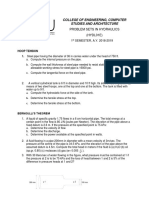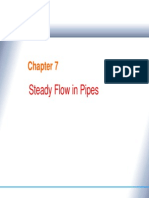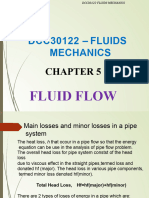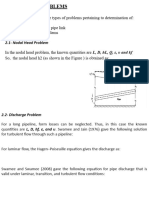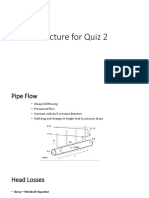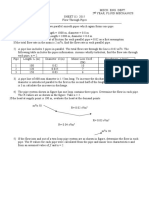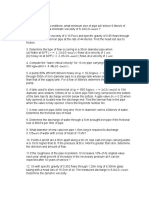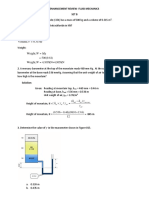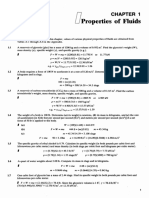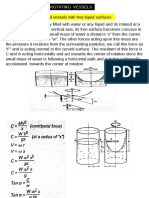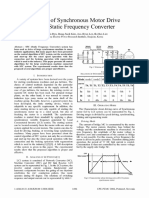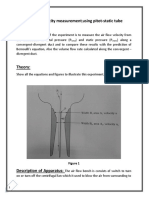0% found this document useful (0 votes)
124 views26 pagesLecture 9
The document discusses the principles of pipe networks, specifically focusing on series and parallel connections, and includes problem-solving frameworks for calculating flow and head loss. It presents multiple problems involving pipes in series and parallel, including calculations for diameters, flow rates, and head losses. Additionally, it covers concepts such as Reynolds number, laminar and turbulent flow, and provides examples related to reservoir problems.
Uploaded by
Kimberly Rico BuladoCopyright
© © All Rights Reserved
We take content rights seriously. If you suspect this is your content, claim it here.
Available Formats
Download as PPTX, PDF, TXT or read online on Scribd
0% found this document useful (0 votes)
124 views26 pagesLecture 9
The document discusses the principles of pipe networks, specifically focusing on series and parallel connections, and includes problem-solving frameworks for calculating flow and head loss. It presents multiple problems involving pipes in series and parallel, including calculations for diameters, flow rates, and head losses. Additionally, it covers concepts such as Reynolds number, laminar and turbulent flow, and provides examples related to reservoir problems.
Uploaded by
Kimberly Rico BuladoCopyright
© © All Rights Reserved
We take content rights seriously. If you suspect this is your content, claim it here.
Available Formats
Download as PPTX, PDF, TXT or read online on Scribd
/ 26







